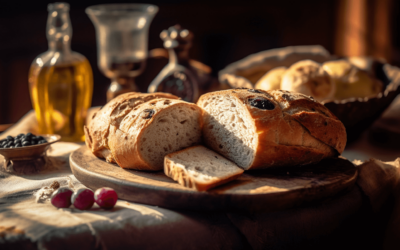Tips for Writing SEO-Friendly Recipes are more crucial than ever for culinary bloggers aiming to stand out in a saturated digital landscape. This ultimate guide will provide you with the ingredients for success, ensuring your delicious creations are not just savored by readers, but also favored by search engines. Dive into the techniques that will take your recipe content to the top of search results.
That’s where Search Engine Optimization (SEO) comes into play. In this article, we will delve into the world of SEO and how it can significantly impact the visibility and success of your recipes. We’ll start by discussing the fundamentals of keyword research and finding the right keywords that will attract organic traffic to your website.
By targeting specific keywords related to your recipes, you can ensure that your content reaches those who are actively searching for similar dishes. But it doesn’t stop there – optimizing your recipe titles and descriptions is equally important. We’ll provide expert advice on crafting compelling titles and descriptions that not only entice readers but also rank well in search engine results pages (SERPs). After all, what good is a delicious recipe if no one can find it?
Structuring your recipe content in a way that enhances search engine visibility is another key aspect we’ll cover. From utilizing proper headings and subheadings to incorporating relevant tags and meta descriptions, we’ll guide you through the process of making your recipes more discoverable by search engines. Of course, visuals play a significant role in attracting readers as well. We’ll discuss how high-quality images and videos can enhance your recipes’ appeal while also improving their SEO value. From lighting techniques to composition tips, we’ll offer expert advice on capturing mouthwatering visuals that leave viewers craving more.
Lastly, we’ll explore various strategies for promoting your SEO-friendly recipes to maximize reach and engagement. Whether it’s leveraging social media platforms or collaborating with influencers in the food industry, we’ll provide actionable tips to help you expand your audience and build a loyal following. So, if you’re ready to take your recipe writing to the next level and unlock the full potential of SEO, let’s dive in together. By implementing these best SEO practices, you’ll be well on your way to increasing your online visibility, attracting more readers, and ultimately becoming a go-to source for delectable recipes. Let’s get started!
Understanding the Importance of SEO in Recipe Writing
When it comes to culinary blogging, writing recipes that are SEO-friendly is essential for gaining visibility and attracting a larger audience. Understanding the importance of SEO in recipe writing can greatly impact the success of your blog. By optimizing your content for search engines, you increase the chances of your recipes being discovered by those searching for specific dishes or ingredients.
SEO, or search engine optimization, involves using relevant keywords and techniques to improve your website’s ranking on search engine results pages. In the context of recipe writing, this means incorporating keywords related to the dish or ingredients throughout your content. By doing so, you increase the likelihood of your recipes appearing higher in search results when users are looking for specific recipes or cooking ideas.
By understanding the importance of SEO in recipe writing, you can effectively reach a wider audience and attract more visitors to your culinary blog. With proper keyword research and optimization techniques, you can ensure that your recipes are visible to those who are actively searching for them. This not only increases traffic to your blog but also enhances user engagement as readers find value in the content you provide.
Keyword Research: Finding the Right Keywords for Your Recipes
When it comes to writing SEO-friendly recipes, keyword research plays a crucial role in ensuring that your content reaches the right audience. By finding the right keywords for your recipes, you can optimize your content to appear in relevant search results and attract more organic traffic. Start by brainstorming a list of potential keywords that are related to your recipe, such as ingredients, cooking techniques, or specific dietary preferences. Then, use keyword research tools like Google Keyword Planner or SEMrush to identify the search volume and competition for each keyword.
Once you have a list of potential keywords, it’s important to choose the ones that have a good balance between search volume and competition. Look for keywords with high search volume but low competition to increase your chances of ranking higher in search engine results. Additionally, consider long-tail keywords that are more specific and targeted, as they can help you reach a niche audience who is actively searching for your type of recipe.
Remember that keyword research is an ongoing process. As trends change and new recipes become popular, it’s important to regularly update your keyword strategy to stay relevant. Keep an eye on industry news and social media platforms to identify emerging food trends or popular ingredients that you can incorporate into your recipes. By staying up-to-date with keyword research, you can ensure that your culinary blog remains optimized for SEO and continues to attract organic traffic.

Optimizing Recipe Titles and Descriptions for SEO
When it comes to optimizing recipe titles and descriptions for SEO, there are a few key strategies that culinary bloggers should keep in mind. First and foremost, it’s important to include relevant keywords in both the title and description of your recipe. These keywords should accurately reflect the main ingredients or flavors of the dish, as well as any unique or special techniques used in its preparation. By incorporating these keywords into your titles and descriptions, you’ll increase the likelihood that your recipes will appear in search engine results when users are looking for specific dishes.
In addition to using keywords, it’s also crucial to write clear and concise recipe titles and descriptions that accurately describe what readers can expect from your dish. Avoid using vague or generic terms, and instead focus on providing specific details about the flavors, textures, and cooking methods involved. This will not only help improve your search engine visibility but also entice readers to click on your recipes when they appear in search results.
Another important aspect of optimizing recipe titles and descriptions for SEO is ensuring that they are unique and original. Search engines prioritize fresh content, so it’s essential to avoid duplicating titles or descriptions from other sources. Instead, take the time to craft unique titles and descriptions that accurately represent your own culinary creations. This will not only help improve your search engine rankings but also establish you as an authoritative source of original recipes.
Structuring Your Recipe Content for Better Search Engine Visibility
When it comes to structuring your recipe content for better search engine visibility, there are a few key factors to keep in mind. First and foremost, make sure that your recipe is easy to read and follow. Use clear headings and subheadings to break up the text and make it more scannable for both readers and search engines. Additionally, consider using bullet points or numbered lists to highlight important steps or ingredients.
In addition to readability, it’s also important to optimize your recipe content with relevant keywords. This means incorporating keywords naturally throughout the text, including in the title, headings, and body of your recipe. However, be careful not to overdo it – keyword stuffing can actually harm your SEO efforts. Instead, focus on using keywords strategically and sparingly.
Another important aspect of structuring your recipe content is organizing it in a logical manner. Start with an introduction that provides some context or background information about the dish you’re sharing. Then, clearly outline the ingredients needed and provide step-by-step instructions for preparing the recipe. Finally, consider adding any additional tips or variations at the end of the recipe to further enhance its value for readers.
Enhancing Your Recipes with High-Quality Images and Videos
One of the most effective ways to enhance your recipes and make them more appealing to readers is by incorporating high-quality images and videos. Visual content not only adds visual appeal to your blog posts, but it also helps to engage your audience and make your recipes more shareable on social media platforms. When it comes to images, make sure they are clear and well-lit, and showcase the final dish in an appetizing way. Avoid using stock photos whenever possible, as original images tend to perform better in terms of SEO.
In addition to images, videos can also be a powerful tool for enhancing your recipes. Consider creating short cooking videos that demonstrate the step-by-step process of preparing a dish. These videos can be embedded within your blog post or shared on video-sharing platforms like YouTube. Not only do videos provide a visual representation of the recipe, but they also allow you to connect with your audience on a more personal level.
When adding images and videos to your recipes, it’s important to optimize them for SEO. This includes using descriptive file names and alt tags that include relevant keywords related to the recipe. Additionally, consider compressing your images so that they load quickly on both desktop and mobile devices. By enhancing your recipes with high-quality visuals and optimizing them for SEO, you can attract more readers and keep them engaged with your culinary blog.
Promoting Your SEO-Friendly Recipes for Maximum Reach and Engagement
Once you have optimized your recipes for SEO, it’s time to focus on promoting them to maximize their reach and engagement. One effective way to do this is by sharing your recipes on social media platforms. Create visually appealing posts with enticing images of your dishes and include a brief description that highlights the key ingredients or unique aspects of the recipe. Use relevant hashtags to increase visibility and encourage users to share your content.
In addition to social media, consider reaching out to other bloggers or influencers in the culinary industry who may be interested in featuring your recipes on their platforms. Collaborating with others can help expand your audience and increase exposure for your blog. You can also participate in online communities or forums related to cooking and share links to your recipes when appropriate, providing value to the community while promoting your own content.
Another effective strategy for promoting your SEO-friendly recipes is by utilizing email marketing. Build an email list of subscribers who are interested in receiving updates from your blog, and send out regular newsletters featuring new recipes or highlighting popular ones. Include eye-catching images and compelling descriptions that entice readers to click through to your website. By consistently engaging with your audience through email, you can build a loyal following and drive more traffic to your blog.






0 Comments